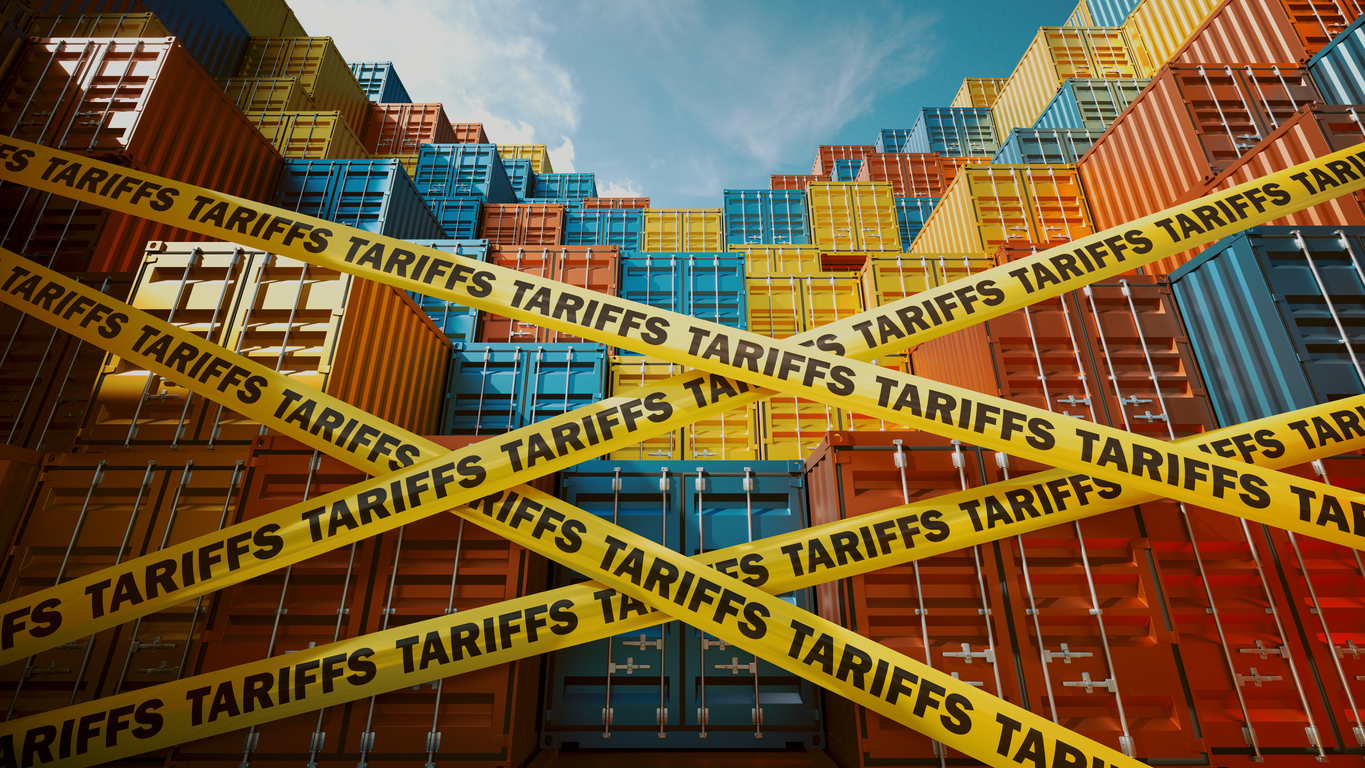Tariffs Are Reshaping Global Supply Chains in 2025: Why Diversification and Risk Mitigation Are a C-Suite Priority
Tariffs have historically been policy levers in global trade. But today, they have become much more. They are a disruptive force reshaping sourcing, logistics, and financial planning. With new U.S. tariffs hitting industries from consumer electronics to textiles and automotive, executives must figure out how to adapt their supply chain strategy to maintain resilience and profitability.
The answer lies in diversifying sourcing while protecting shipments and mitigating risk across borders. Companies that build agility into both their procurement and logistics strategies are best positioned to weather tariff shocks without eroding margins or passing along the cost burden to consumers.

The 2025 Tariff Landscape: Change as the New Normal
This year’s tariff escalations are among the most dramatic in decades. A baseline 10% levy now applies to most U.S. imports, with far higher rates on targeted regions: 46% on Vietnam, 10–20% on the EU, and 25% on $300 billion in Chinese imports, including semiconductors and EV batteries.
In June, steel and aluminum tariffs surged to 50%, shaking manufacturers and creating ripple effects across North American integration under the USMCA.
But the bigger challenge is volatility. Sudden enactments, reversals, and reimpositions of tariffs have made long-term planning nearly impossible.
Tariffs Are Forcing Businesses to Rewire Supply Chains
As a result of the tariffs, brands and manufacturers around the world are rethinking their supply chain strategies.
• Retailers like Best Buy have pressured suppliers to diversify away from China, cutting exposure from 55% of costs to around 30–35%.
• Indian textile manufacturers, hit with 50% tariffs, are urgently rethinking export markets and production models.
• Fashion and footwear brands like Steve Madden have paused diversification into Brazil because tariff unpredictability makes ROI impossible to model.
Tariffs are forcing a dual response: diversify suppliers and secure logistics against rising risks.
The Hidden Costs of Maintaining Your Company’s Status Quo
The National Foreign Trade Council warns that tariffs are delaying U.S. capital investment and causing companies to scale back operations.
Michigan State researchers identified three major cost categories from tariff shocks:
• Adjustment costs: reconfiguring suppliers and transport channels
• Transaction costs: navigating customs and compliance
• Opportunity costs: lost sales and slowed innovation
Without protective measures like insured logistics solutions and diversified sourcing, the financial strain of tariffs compounds quickly.
The Executive Playbook: Building Resilience in Supply Chains and Shipping
There are things leaders and executives can do to mitigate the negative effects of uncertainty and shield customers from price increases.
1. Supplier and Geographic Diversification
Reducing reliance on one country is no longer optional. Many companies are embracing “friendshoring” or shifting production to nations with stable trade agreements.
2. Securing High-Value Shipments
Even diversified sourcing exposes companies to cross-border shipping risks, like theft, loss, damage, or delay. Executives are increasingly turning to specialized insurance coverage and shipment monitoring tools that protect high-value goods in transit. This ensures tariff-driven cost increases aren’t worsened by uninsured shipping losses.
3. Analytics and Risk Intelligence
Real-time analytics, AI-driven scenario planning, and shipment tracking platforms help executives test alternative sourcing options, identify tariff exposure, and detect logistics vulnerabilities before they become costly disruptions.
4. End-to-End Risk Mitigation
Supply chains are not linear. They are complex webs. C-level leaders are now adopting end-to-end strategies that combine sourcing flexibility with insured logistics, customs compliance, and cargo visibility. These capabilities not only reduce risk but also deliver competitive advantage during volatile trade cycles.
Leadership Imperatives for 2025
Mitigating the financial impact of changing trade environments requires cross-functional cooperation with executives leading the way.
• COOs should architect supplier networks that balance cost and resilience.
• CROs must build tariff volatility into enterprise risk frameworks while strengthening protection for goods in transit.
• CFOs should model the financial impacts of tariff scenarios and explore coverage solutions that stabilize shipping and logistics expenses.
Final Thoughts: Diversify, Secure, and Lead
Tariffs and change are not a passing phase. Executives who act decisively to diversify sourcing and secure logistics will protect margins, stabilize operations, and strengthen resilience.
The most successful leaders are adopting a dual strategy: expanding their supplier base while leveraging logistics protection and shipment visibility tools. This combination enables businesses to absorb tariff shocks without sacrificing growth.
Executives navigating tariff uncertainty should evaluate how well their sourcing strategies and shipping protections align with today’s risks. With the right mix of diversification, insured logistics, and data-driven oversight, your organization can stay resilient—no matter how trade policies evolve.
Keep Checking Out Our Other Posts
Subscribe for Email Updates









